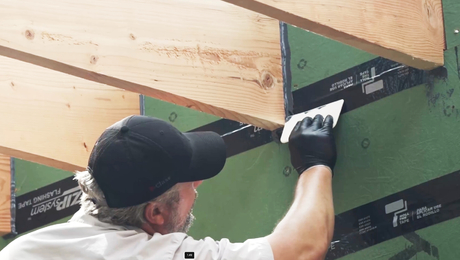tapping a 4″ cast iron under concrete
getting ready to put a 2nd bath in a basement.the sewer line is cast iron,running under the concrete floor. so plan is to cut floor and jackhammer some access. all i can think of to tap into this line is to cut out about 24″ of cast iron, and glue up a combination y with 4″ plastic stub on each end and use a hubless connector on each end.the only thing is,i’m a little spooked covering this up with concrete never to be seen again.would the y be better in cast,then turn to plastic? that would give me 3 hubless connectors.how about setting the pipe in concrete instead of sand. thanks larry
hand me the chainsaw, i need to trim the casing just a hair.


















Replies
Don't worry, your cast iron will be seen again, in 50 - 100 years when it rots out and has to be replaced.
Why not stay with no-hub cast iron until you are above slab, then go to plastic from there?
Not long ago, all DWV under slabs had to be iron.
Bill
I forgot to say that sand is better than concrete for setting pipe. The pipe won't crack under minor movement if it has some give.
Bill
To add a bit to what the other Bill said.
Personally I would install a cast iron branch then transition to plastic after that , but there is more than one way to skin a cat.
Where the pipe is going to contact the concrete foam tape or rubitex¯ type insulation is a great way to protect the pipe from the concrete. Except for bedding then like Bill said sand would be best.
you guys suggested 2 different ways to do this,i felt like the least amount of hubless connectors under cement the better. with your idea it would take 3 connectors [at each end of y and where plastic connects]would that be better than the 2 with a plastic y.is there any concern about expansion and contraction of the plastic in relation to the ci? thanks i'm getting the itch to start jackhammering lol larryhand me the chainsaw, i need to trim the casing just a hair.
The amount of no-hub (hubless) under the slab is irrelevant.
It basically boils down to preference some like plastic others prefer cast-iron.
You can do it either way.
I'm guessing you don't have all the plumbing tools I have, so let me look at this from a non-plumber task.
If you go all no hub under the slab you have to make exact cuts.
So for the typical DIY I would say go with making the 2 cuts in the pipe far enough apart so that you have room to play when making up the plastic "wye" with 2 short pups connected.
I understand that plastic is going to be more DIY friendly than cast iron.
Bed the pipe in sand, & anywhere the pipe is passing through the concrete wrap with foam tape, rubitex¯, bubble wrap, foam packaging, etc.....---- basically anything that is compressible that will not rot.
Any other questions feel free to ask.
I have a question for ya. Not looking to steal the thread just asking a question.
I'm doing a tile repair in a basement where they busted the tile and dug up the concrete looking for a leak. It just so happens it's right where the copper baseboard pipe comes through the slab.
What's the best thing to protect the copper from the concrete even though it wasn't originally done? I know copper reacts with the lime in concrete to corode it faster.
Thanks JEM
Headstong, I'll take on anyone!
Rubitex¯ & armaflex¯
Are the two most popular & readily available at the hardware stores.
can you use a saddle type of connection? just need to drill/cut a oval hole in the pipe side and bolt it on with some seal stuff. Use a directional saddle for this.
I have used a lot of saddle connections for water & other products, but never for waste lines.
I have never seen one that has enough throw in it for a gravity waste line.
Have you seen one & if so you have a link for it.
It could be a big seller.
I seem to recall -from my apprentice classes nearly thirty years ago- that saddles on drains are not to code. Drilling a hole weakened the pipe. But my memory fails me sometimes. Errr, a lot of the time.
Myself, I would cut the pipe with a reciprocating saw and splice in a no-hub cast iron wye. PVC is code approved in our area, but I don't like that you can't tweak the connections to have pitch on a horizontal run and a plumb riser. Depending on the age of the old pipe, a chain cutter might crack the pipe.